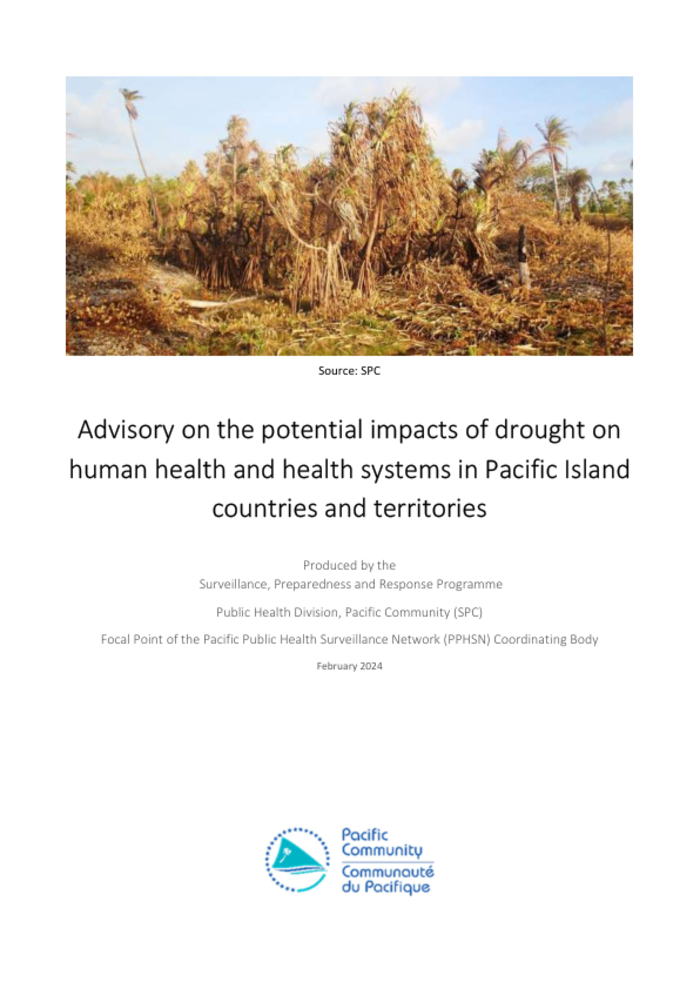introduction
The Pacific Ocean is the source of the El Niño Southern Oscillation, which has a major impact on the weather conditions of Pacific Island Countries and Territories (PICT). The current situation is a major El Niño event that has a major impact on rainfall patterns in the Western Pacific, exposing many PICTs to drought. At the same time, some PICTs in the eastern Pacific are facing higher levels of rainfall, which could have health implications due to flooding.
Drought has been declared in several PICTs in the past two years, including Kiribati, FSM, Tonga and Tuvalu. PICT is particularly vulnerable to severe drought impacts due to the following factors:
-
Depends on surface water and rainfall
-
Changes in groundwater table due to water use and land use
-
Reduced agricultural capacity could lead to changes in food security for domestic and downstream markets
-
High prevalence of non-communicable diseases
-
Limited nutrition monitoring across PICT
The purpose of this advisory is to highlight the risks to human health in severe drought conditions and to ensure that PICT health systems are prepared and respond appropriately.Health risks associated with freshwater scarcity: quantity and quality
The first major impact drought has on people is stress on freshwater quantity and quality. This stress on freshwater has direct and indirect health effects. The map below shows water stress in Palau, the Federated States of Micronesia (FSM), the Marshall Islands, PNG, Tuvalu, New Caledonia, Vanuatu, Fiji, Wallis and Futuna, Samoa, American Samoa, Tonga, Niue, and parts of the southern Cook Islands. Indicates a warning. , Austral Islands, Tuamotu Islands and Pitcairn Islands from October to December 2023.


